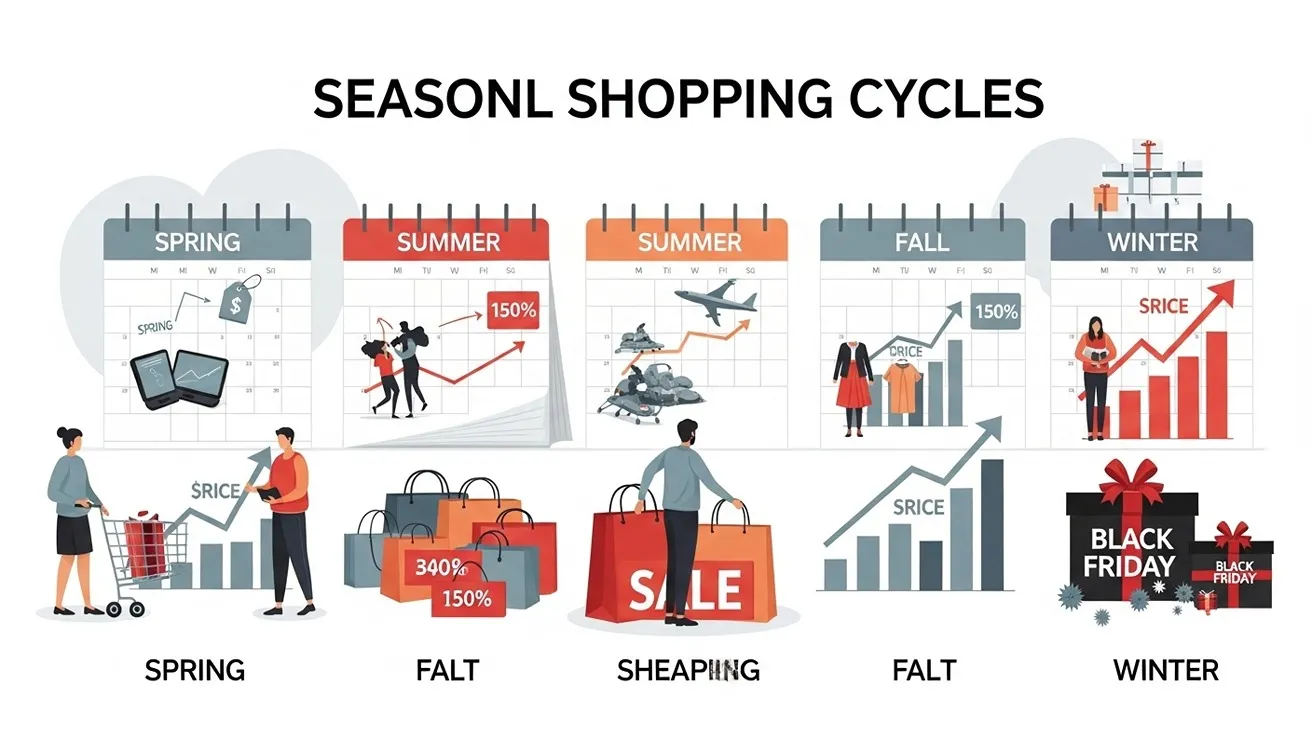
When people think about discounts, the first thing that
comes to mind is Black Friday. It’s the most famous sale event of the
year, where retailers slash prices and shoppers rush to grab the best deals.
But the truth is, prices don’t only rise and fall during Black Friday. Seasonal
shopping cycles influence the prices you pay throughout the year. If you’ve
ever wondered why prices dip one month and spike the next, it’s all part of a
bigger strategy that retailers have been using for years.
Seasonal shopping cycles are predictable patterns when
prices rise and fall throughout the year. Retailers adjust their pricing based
on consumer demand, holidays, and the need for inventory. This cycle isn’t
random—it’s carefully designed to encourage spending during specific times
while maximizing profits.
For example, winter coats are cheapest in late winter, when
stores want to clear out inventory, but most expensive in early fall, when
demand is high. The same logic applies to electronics, furniture, and even
groceries.
There are several reasons why prices follow these seasonal
cycles:
1.
Consumer Demand: Prices rise when demand
is high. For instance, gym equipment becomes more expensive in January when
people commit to fitness goals.
2.
Inventory Clearance: Retailers slash
prices when they need to make room for new collections. Think of end-of-season
clothing sales.
3.
Holiday Shopping: Major holidays like
Christmas, Valentine’s Day, and Mother’s Day come with discounts, but not every
deal is as good as it looks.
4.
Marketing Strategies: Limited-time offers
and event-driven sales create urgency, encouraging shoppers to buy even when
they don’t plan to.
Understanding these cycles can help you plan purchases
instead of rushing into impulse buys.
Black Friday may look like the biggest savings event, but
not every deal is the lowest price of the year. Many retailers raise prices
weeks before and then slash them to make discounts appear bigger. Sometimes,
better deals come later—like after Christmas or during New Year’s clearance
sales.
For instance, electronics like TVs often hit their lowest
prices in January, when the holiday rush is over and retailers want to clear
inventory before the next big launch.
The smartest shoppers don’t just wait for Black Friday. They
study the seasonal cycles and plan purchases. Here are a few strategies:
By combining patience with planning, you can save more
throughout the year without falling for fake discounts.
Black Friday may get all the attention, but real savings are
hidden in seasonal shopping cycles that happen all year. Prices rise and fall
in predictable patterns, and once you understand them, you’ll never feel
pressured to buy in a rush again. Smart shopping is about timing, planning, and
knowing when retailers are most likely to give you the best price.
For more shopping tips, insights, and smart buying guides,
visit TrandyReviews.